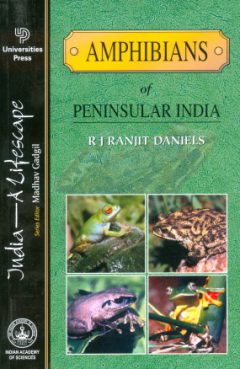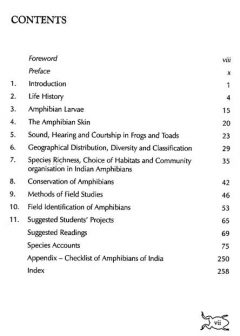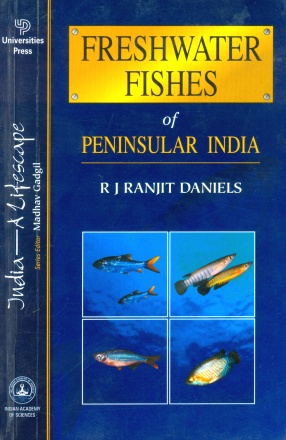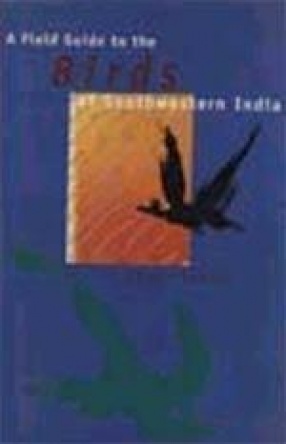Amphibians are considered to the best indicators of environmental health. A decline in amphibian populations indicates ecosystem deterioration that might affect a wider spectrum of the earth’s biological diversity. During the last 12years there has been a great concern, worldwide, about the rapid decline in amphibian populations. Many reasons have been attributed to the loss of amphibians including habitat loss, UV.B radiation, global warming, toxic chemicals, pathogens that destroy eggs and larval stages, direct harvest and others. Of these, loss of habitat seems to be the most significant factor, at least in tropical countries.
In this book, 72 species of Indian amphibian including caecilians have been described. These amphibians are common and widely distributed in peninsular India and represent about one third of all amphibian species known in India. The descriptions are simple and contain, although limited, details of other closely-related species, taking the actual number of amphibian species discussed to well over 100. The many illustrations provided throughout the species accounts and the illustrated keys should make it possible for students and amateur naturalists to identify amphibians in the field without much difficulty. To avoid any confusion that might arise from scientific names that keep changing, those names that have been the most consistently used in India have been retained in this book. However, all recent changes have been included as synonyms. Additionally, an appendix that lists out all the known species of Indian amphibians (at the time that the book was written) has been provided.









There are no reviews yet.